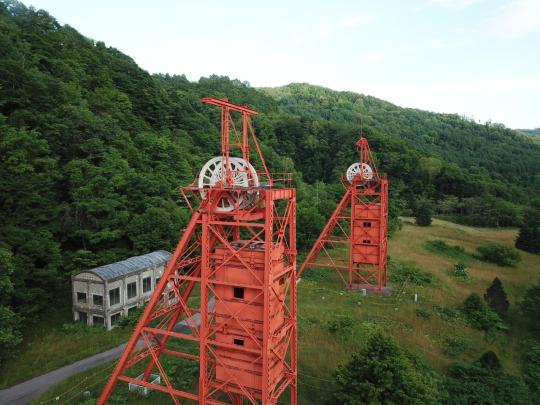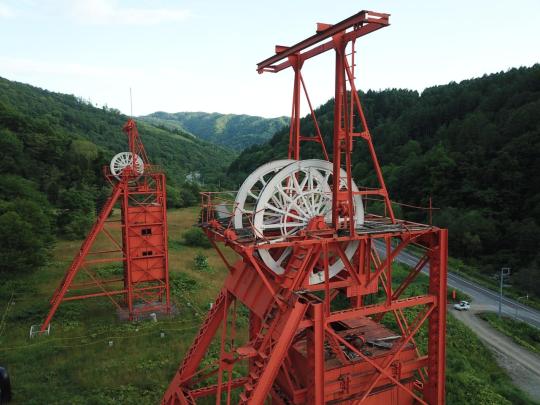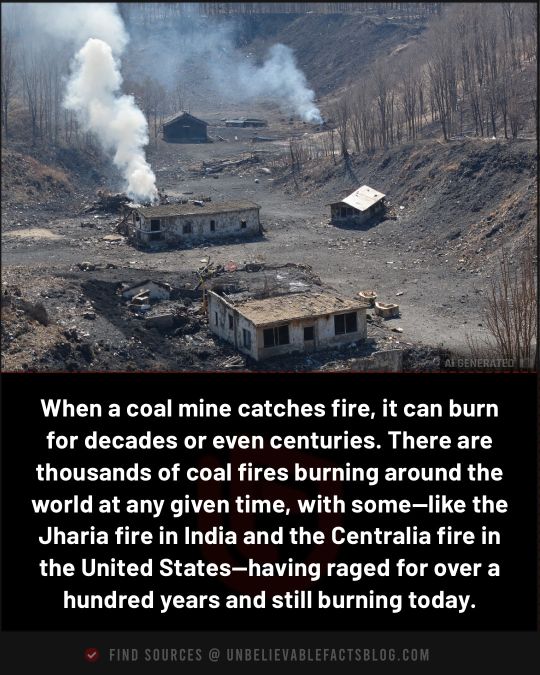#Mining
Explore tagged Tumblr posts
Text

19th century coal miner’s canary, with an inscription that reads, “In Memory of Little Joe. Died November 3rd 1875. Aged 3 Years”.
19K notes
·
View notes
Text

Emphasizing that they aimed to be as transparent about their sourcing as possible, executives at the ethical diamond company OutShine told reporters Wednesday they only used white children to mine. “As a modern, sustainable diamond company that prioritizes making all of our products cruelty-free, we want to clarify that we only use the palest, most Caucasian minors to harvest our precious stones,” said CEO Jared Mills, adding that OutShine took the utmost care to ensure every single mine it used exclusively employed 10-year-olds with blond hair and blue eyes from affluent suburbs around Boston, Milwaukee, and the greater Chicagoland area.
5K notes
·
View notes
Text
Green energy is in its heyday.
Renewable energy sources now account for 22% of the nation’s electricity, and solar has skyrocketed eight times over in the last decade. This spring in California, wind, water, and solar power energy sources exceeded expectations, accounting for an average of 61.5 percent of the state's electricity demand across 52 days.
But green energy has a lithium problem. Lithium batteries control more than 90% of the global grid battery storage market.
That’s not just cell phones, laptops, electric toothbrushes, and tools. Scooters, e-bikes, hybrids, and electric vehicles all rely on rechargeable lithium batteries to get going.
Fortunately, this past week, Natron Energy launched its first-ever commercial-scale production of sodium-ion batteries in the U.S.
“Sodium-ion batteries offer a unique alternative to lithium-ion, with higher power, faster recharge, longer lifecycle and a completely safe and stable chemistry,” said Colin Wessells — Natron Founder and Co-CEO — at the kick-off event in Michigan.
The new sodium-ion batteries charge and discharge at rates 10 times faster than lithium-ion, with an estimated lifespan of 50,000 cycles.
Wessells said that using sodium as a primary mineral alternative eliminates industry-wide issues of worker negligence, geopolitical disruption, and the “questionable environmental impacts” inextricably linked to lithium mining.
“The electrification of our economy is dependent on the development and production of new, innovative energy storage solutions,” Wessells said.
Why are sodium batteries a better alternative to lithium?
The birth and death cycle of lithium is shadowed in environmental destruction. The process of extracting lithium pollutes the water, air, and soil, and when it’s eventually discarded, the flammable batteries are prone to bursting into flames and burning out in landfills.
There’s also a human cost. Lithium-ion materials like cobalt and nickel are not only harder to source and procure, but their supply chains are also overwhelmingly attributed to hazardous working conditions and child labor law violations.
Sodium, on the other hand, is estimated to be 1,000 times more abundant in the earth’s crust than lithium.
“Unlike lithium, sodium can be produced from an abundant material: salt,” engineer Casey Crownhart wrote in the MIT Technology Review. “Because the raw ingredients are cheap and widely available, there’s potential for sodium-ion batteries to be significantly less expensive than their lithium-ion counterparts if more companies start making more of them.”
What will these batteries be used for?
Right now, Natron has its focus set on AI models and data storage centers, which consume hefty amounts of energy. In 2023, the MIT Technology Review reported that one AI model can emit more than 626,00 pounds of carbon dioxide equivalent.
“We expect our battery solutions will be used to power the explosive growth in data centers used for Artificial Intelligence,” said Wendell Brooks, co-CEO of Natron.
“With the start of commercial-scale production here in Michigan, we are well-positioned to capitalize on the growing demand for efficient, safe, and reliable battery energy storage.”
The fast-charging energy alternative also has limitless potential on a consumer level, and Natron is eying telecommunications and EV fast-charging once it begins servicing AI data storage centers in June.
On a larger scale, sodium-ion batteries could radically change the manufacturing and production sectors — from housing energy to lower electricity costs in warehouses, to charging backup stations and powering electric vehicles, trucks, forklifts, and so on.
“I founded Natron because we saw climate change as the defining problem of our time,” Wessells said. “We believe batteries have a role to play.”
-via GoodGoodGood, May 3, 2024
--
Note: I wanted to make sure this was legit (scientifically and in general), and I'm happy to report that it really is! x, x, x, x
#batteries#lithium#lithium ion batteries#lithium battery#sodium#clean energy#energy storage#electrochemistry#lithium mining#pollution#human rights#displacement#forced labor#child labor#mining#good news#hope
3K notes
·
View notes
Text

Mining facility in northern Taiwan built during the Japanese imperialist era
541 notes
·
View notes
Text
Brazil's Supreme Court strengthens control over gold trade and takes a crucial step towards Amazon conservation
Justices overturn the presumption of good faith in the purchase and sale of gold in Brazil

In a landmark decision, the majority of the justices of the Brazilian Supreme Court ruled the presumption of good faith in the purchase and sale of gold in Brazil unconstitutional. This decision marks a crucial step forward in curbing illegal mining, especially in the Amazon, where the activity has caused devastating environmental impacts and violated the rights of indigenous and riverside communities, even reaching cities through the contamination of fish that spread across the region.
The court's decision rectifies a serious distortion in current legislation, which allowed buyers of the metal, such as Securities and Exchange Commissions, to accept only the miner's self-declaration regarding the origin of the gold, absolving them of any liability if the extraction was illegal. The presumption of good faith in the gold chain had been used as a legal loophole to legitimise the sale of gold extracted through criminal means, including gold taken from Indigenous Lands and Protected Areas. The ruling’s unconstitutionality and the subsequent ban on using this loophole strengthens oversight, protects communities affected by illegal mining, and reduces the funding of criminal networks exploiting this market.
The presumption of good faith had already been suspended by an injunction issued by Justice Gilmar Mendes in April 2023. Now, with the final decision, Brazil is taking a decisive step forward in combating environmental degradation caused by illegal mining, while also preventing criminal organisations from continuing to profit from the unlawful exploitation of these areas.
Continue reading.
#brazil#brazilian politics#politics#environmentalism#good news#supreme federal court#mining#image description in alt#mod nise da silveira
612 notes
·
View notes
Text

A Reclamation prospecting rig taking core samples near one of the few remaining natural bluestick biomes in the Valley of Two-Sky River.
571 notes
·
View notes
Text


Bibai Coal Mine Memorial Forest Park
411 notes
·
View notes
Text

Abandoned mining equipment on Vancouver Island,
Daniel Rieland Photography
#art#photography#abandoned places#abandoned#urbex#urbexphotography#urbexsupreme#zombilenium#decay#mining#vancouver island#daniel rieland#water wheel#nature rights
464 notes
·
View notes
Text





Serra Pelada Gold Mine (Pará, Brazil, 1986)
Author: Sebastião Salgado | Instagram | ICP
#hyperrealism#hyperrealistic#gold mining#gold mine#mining#brazil#1980s#80s#eighties#sebastiao salgado#history#sealed in time#black and white#black & white#b&w#photography#historical photos#history photos#black and white photography#rare photos#vintage photos#worldhistory#old photos
265 notes
·
View notes
Text

202 notes
·
View notes
Text
219 notes
·
View notes
Text



Essen, Germany 1920s
#essen#1920s#germany#history#vintage#photography#deutschland#people#street life#nrw#industry#coal#mining#ruhrpott#aesthetics
149 notes
·
View notes
Text
"Sodium-ion batteries for electric vehicles and energy storage are moving toward the mainstream. Wider use of these batteries could lead to lower costs, less fire risk and less need for lithium, cobalt and nickel.
On Nov. 18, CATL, the world’s largest battery manufacturer, announced its second-generation sodium-ion battery, mass production of which would begin in 2027. The China-based company said the new battery has an energy density of 200 watt-hours per kilogram, which is an increase from 160 watt-hours per kilogram for the previous generation that launched in 2021. Higher energy density in an EV battery translates into more driving range.
On Nov. 21, a consortium of seven U.S. national laboratories announced a new initiative in which they would spend $50 million to foster collaboration to accelerate the development of sodium-ion batteries. The partnership is led by Argonne National Laboratory in the Chicago area.
The two announcements are part of a larger shift as governments, researchers and companies look for alternatives to lithium-ion batteries, the dominant technology for EVs and energy storage.
For now, there are no passenger cars or trucks sold in the United States that use sodium-ion batteries. Some sodium-ion models are available in China and countries that import vehicles from China.
“The reason we’re pursuing this is very simple,” said Venkat Srinivasan, a battery scientist at Argonne and the director of the new collaboration. “It’s because the huge demand in lithium-ion batteries has meant that we have a supply-chain constraint.
“We have a problem with cobalt. We have a problem with nickel,” he said, naming two of the metals often used in lithium-ion batteries.
Cobalt, nickel and lithium carry a variety of concerns, including the environmental damage of mining. [Note: Which is massive, and so are the human rights issues associated with lithium mining, which involves horrible conditions and is exacerbating conflict and civil wars in the Democratic Republic of Congo.] ...
In contrast, a sodium-ion battery relies on an element—sodium—that you can find in table salt and ocean water...
Also, a sodium-ion battery has much lower risk of fire. When lithium-ion batteries sustain damage, it can lead to “thermal runaway,” which triggers a dangerous and toxic fire.
The process of manufacturing sodium-ion batteries is similar to that of lithium-ion batteries, or at least similar enough that companies can shift existing assembly lines without having to spend heavily on retooling.
But sodium-ion batteries have some disadvantages. The big one is low energy density compared to lithium-ion. As a result, an EV running on a sodium-ion battery will go fewer miles per charge than a lithium-ion battery of the same size...
The national labs’ initiative has a five-year timeline, with a goal of developing sodium-ion batteries with energy densities that match or exceed those of today’s iron phosphate-based lithium-ion batteries. Researchers would do this by finding various efficiencies in design and materials.
The project is happening alongside the labs’ ongoing work to develop and improve other kinds of batteries.
Lithium-ion batteries dominate today’s market...
However, sodium-ion battery production is growing, and is projected to reach 140 gigawatt-hours by 2030, about 13 times its current level, according to Benchmark. Lithium-ion production also is projected to nearly triple by 2030.
“The key market driver for sodium-ion batteries is their potential to be cost competitive with lithium-ion batteries,” said Catherine Peake, an analyst for Benchmark...
Most of the push by battery companies to build sodium-ion systems is happening in China, but some of it is happening in other markets, including a plan by California-based Natron Energy to open its first large plant in Rocky Mount, North Carolina. Natron made its announcement about the $1.4 billion project in August and has not given a timeline for when the plant would be online.
Meanwhile, researchers and companies continue working on other battery technologies.
I asked Srinivasan how sodium-ion batteries fit into this larger picture. He said sodium-ion will likely gain market share over the next few years as an alternative to lithium-ion batteries.
Near the end of the decade, solid-state batteries will begin to become available, which would allow for higher energy densities and longer driving ranges. Solid-state batteries use a solid electrolyte instead of a liquid or gel. The electrolyte is the substance through which ions move as they go from side to side during charging and discharging.
The technologies can coexist in the market, Srinivasan said.
He thinks solid-state batteries will initially be most common in high-end models and popular with people who want the longest possible ranges.
He expects that sodium-ion batteries will be more common in low-cost EVs for people who live in cities or suburbs and don’t place a high premium on driving range.
“It will not be a fringe player,” he said, about sodium-ion. “It will actually be a fast-growing segment.”"
-via Inside Climate News, December 6, 2024
#ev#electric vehicles#sodium ion#lithium#lithium battery#lithium ion batteries#lithium mining#mining#cars#good news#hope
821 notes
·
View notes
Text
a choir calling out major tech corporations and brands for their involvement in the Congo genocide.
there are ethical ways to collect the resources we need.
1K notes
·
View notes
Text

When a coal mine catches fire, it can burn for decades or even centuries. There are thousands of coal fires burning around the world at any given time, with some—like the Jharia fire in India and the Centralia fire in the United States—having raged for over a hundred years and still burning today.
136 notes
·
View notes